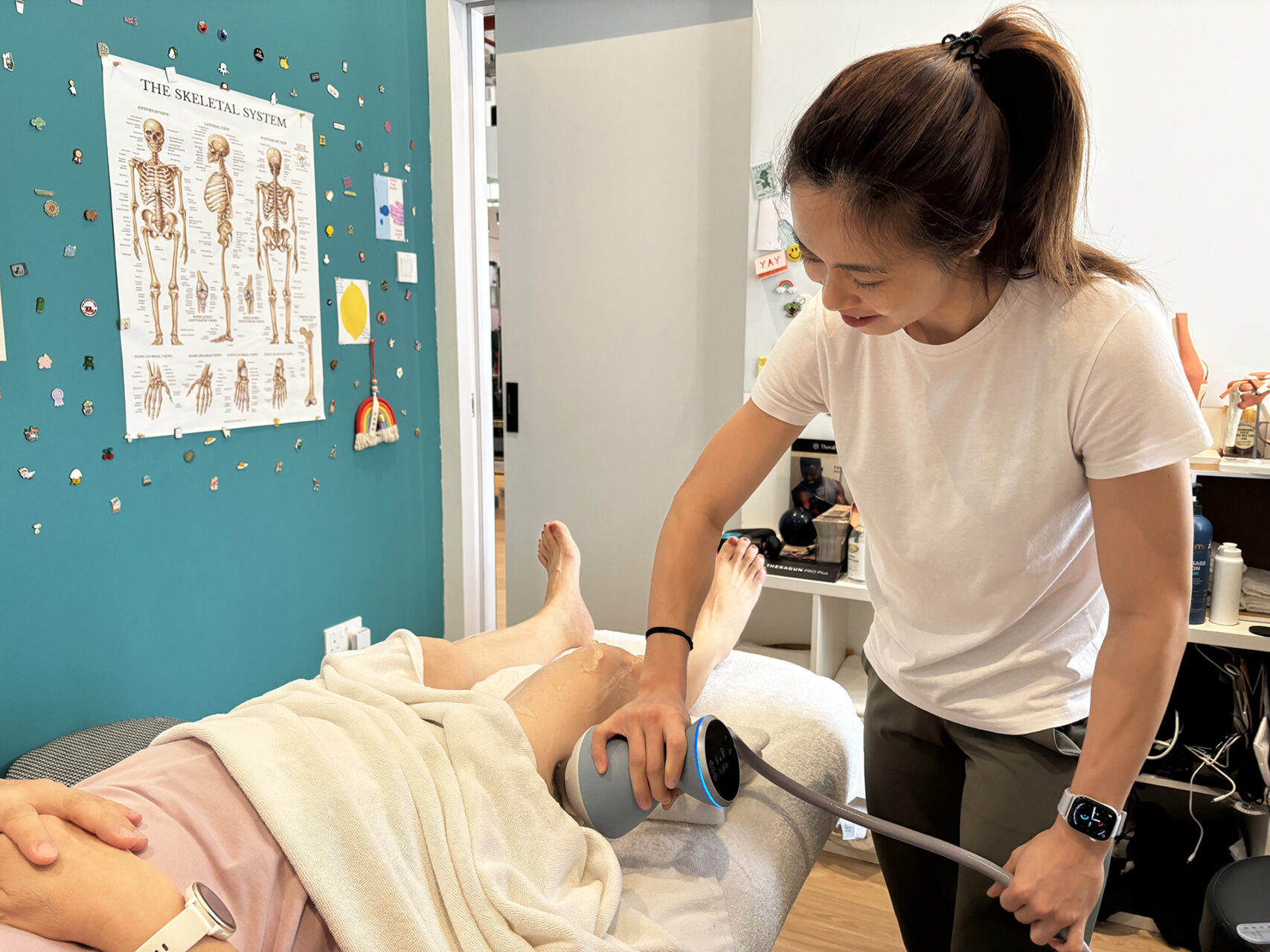|
Getting your Trinity Audio player ready...
|
For athletes or anyone who loves staying active, an ACL tear can feel like your worst nightmare, stopping you from doing what you love.
The anterior cruciate ligament, or ACL as it is more commonly known, is a crucial ligament in the knee that connects the femur to the tibia and helps control knee movement. Maintaining knee stability is absolutely essential for preventing excessive forward movement of the tibia, which also makes it more prone to injury. In fact, ACL injuries are among the most common and serious knee injuries, especially in sports.
At HelloPhysio, we combine traditional physiotherapy with innovative tools like INDIBA Activ and Shockwave Therapy to help you heal and prevent future injuries. With proper ACL tear management, you’re not just patching up the damage, but instead setting yourself up for a stronger comeback.

What Is an ACL Tear and Why Is It Serious?
An ACL tear is when the anterior cruciate ligament, a key knee stabilizer, tears partially or fully, leaving your knee wobbly and unreliable. A torn ACL is like a rope snapping that holds your knee steady during twists or jumps. The severity of an ACL tear may vary depending on the extent of the tear and individual circumstances.
This injury’s a big deal because it affects athletes in sports like football or basketball, where quick pivots are crucial. Even if you’re not an athlete, an untreated tear can make walking or climbing stairs tough and set you up for an increased risk of arthritis or other long-term complications. Proper ACL tear management is crucial to prevent complications and help you get moving again.
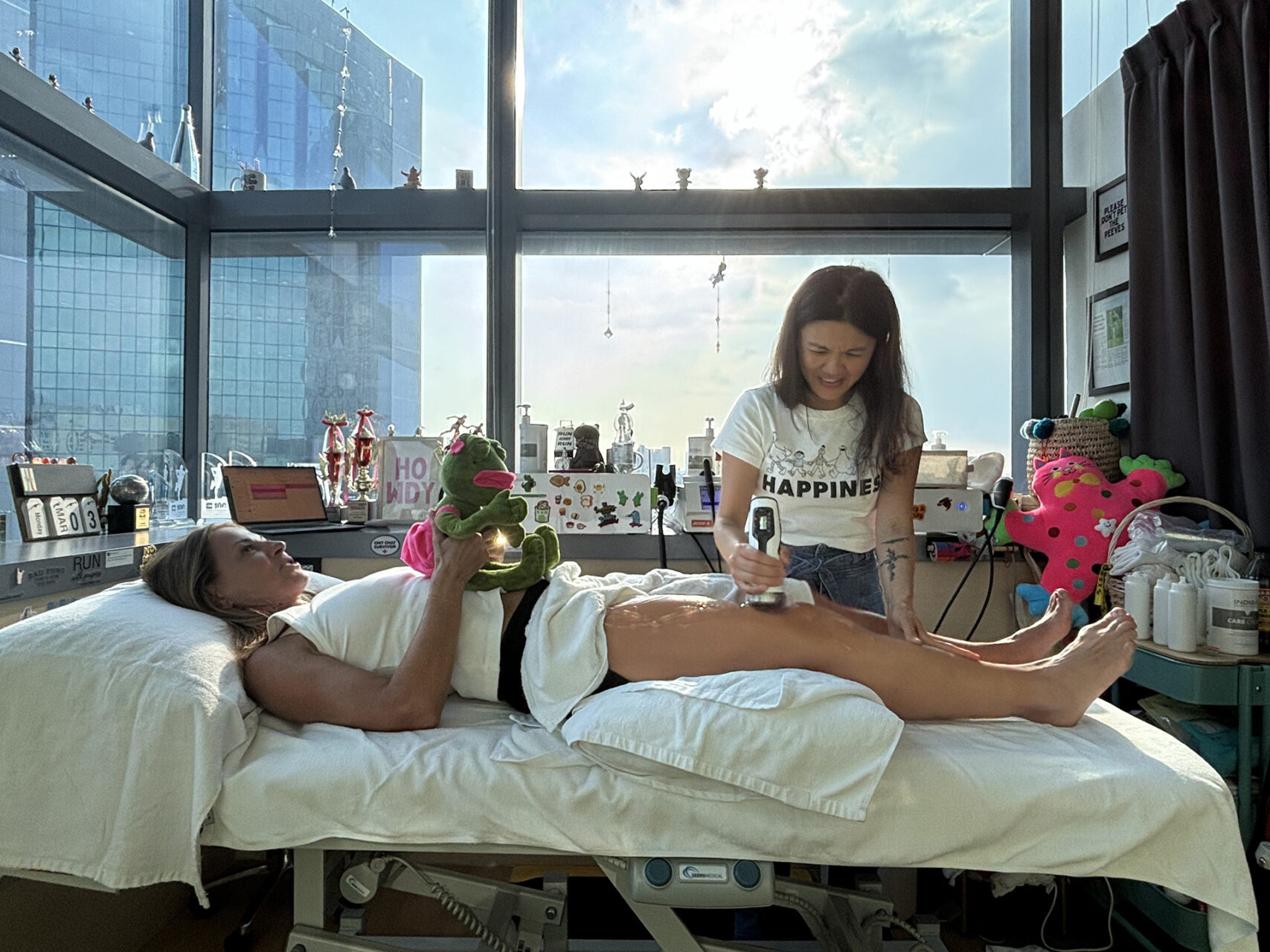
Anatomy of the ACL: Why It’s Prone to Injury
The ACL sits diagonally in your knee, connecting the thigh bone (femur) to the shin bone (tibia), and is one of the key stabilizing ligaments of the knee. The ACL works with the posterior cruciate ligament to prevent your shin from sliding too far forward or twisting out of control. In contrast, the medial collateral ligament contributes to side stability.
The ACL is essential for maintaining normal knee kinematics and ensuring smooth, controlled movement in both knees. It’s built for high-speed moves, but that’s exactly why it’s vulnerable to ligamentous injuries. The kicker? Its poor blood supply means it won’t heal on its own. That’s where acute ACL tear management comes in, using targeted strategies to protect the joint and prevent further damage.

What Causes an ACL Tear?
Most ACL tears happen without anyone touching you, such as a quick pivot, a sudden stop, or a rough jump landing. These non-contact injuries are often associated with sports that require rapid changes in direction. Think of a footballer dodging a defender, foot planted, knee twisting. That’s enough for an ACL tear to occur. Contact injuries, such as a rugby tackle, can also force the knee into unfavourable angles. Key risk factors for ACL tears include weak hamstrings, poor landing form, fatigue, a history of previous tears, and anatomical differences.

Symptoms of an ACL Tear
An ACL tear often comes with a loud pop you both hear and feel, followed by swelling within hours and knee pain that may be mild or severe. Your knee might feel like it’s giving out, making walking or turning shaky. Partial tears may be less dramatic than a sprain, but they can still disrupt your stability and cause knee instability. These signs require prompt ACL tear management to prevent additional damage to cartilage or meniscus, which often occurs in about half of ACL tear cases.

Acute ACL Tear Management
Acute ACL tear management focuses on managing pain and swelling in the first few days, using the PEACE protocol: protect, elevate, avoid early anti-inflammatory medications, compress, and educate.
Consider using crutches and a brace, and practicing gentle movements to help keep the knee from stiffening; maintaining range of motion is crucial during this stage to prevent long-term stiffness. You need to support movement and blood flow, or recovery may become more difficult.
At HelloPhysio, we utilize INDIBA Activ to treat ACL tears. Its radiofrequency waves boost circulation, easing inflammation faster than ice alone. This sets the stage for a smoother recovery, whether your ACL tear requires surgery or not.

Surgical vs. Conservative Management
Not every ACL tear needs surgery. The decision depends on the severity of the tear, your age, knee instability, and your activity goals. ACL reconstructions are a standard surgical procedure, especially for young athletes aiming to return to high-impact sports.
Surgery may be appropriate if there is significant knee instability or if conservative management carries an increased risk of further injury. However, ACL reconstructions carry a risk of re-rupture, particularly if the graft fails. For less active individuals or those with partial tears, conservative management may be enough.
At HelloPhysio, we assess your goals and the severity of knee instability to inform the choice between surgical and conservative management.
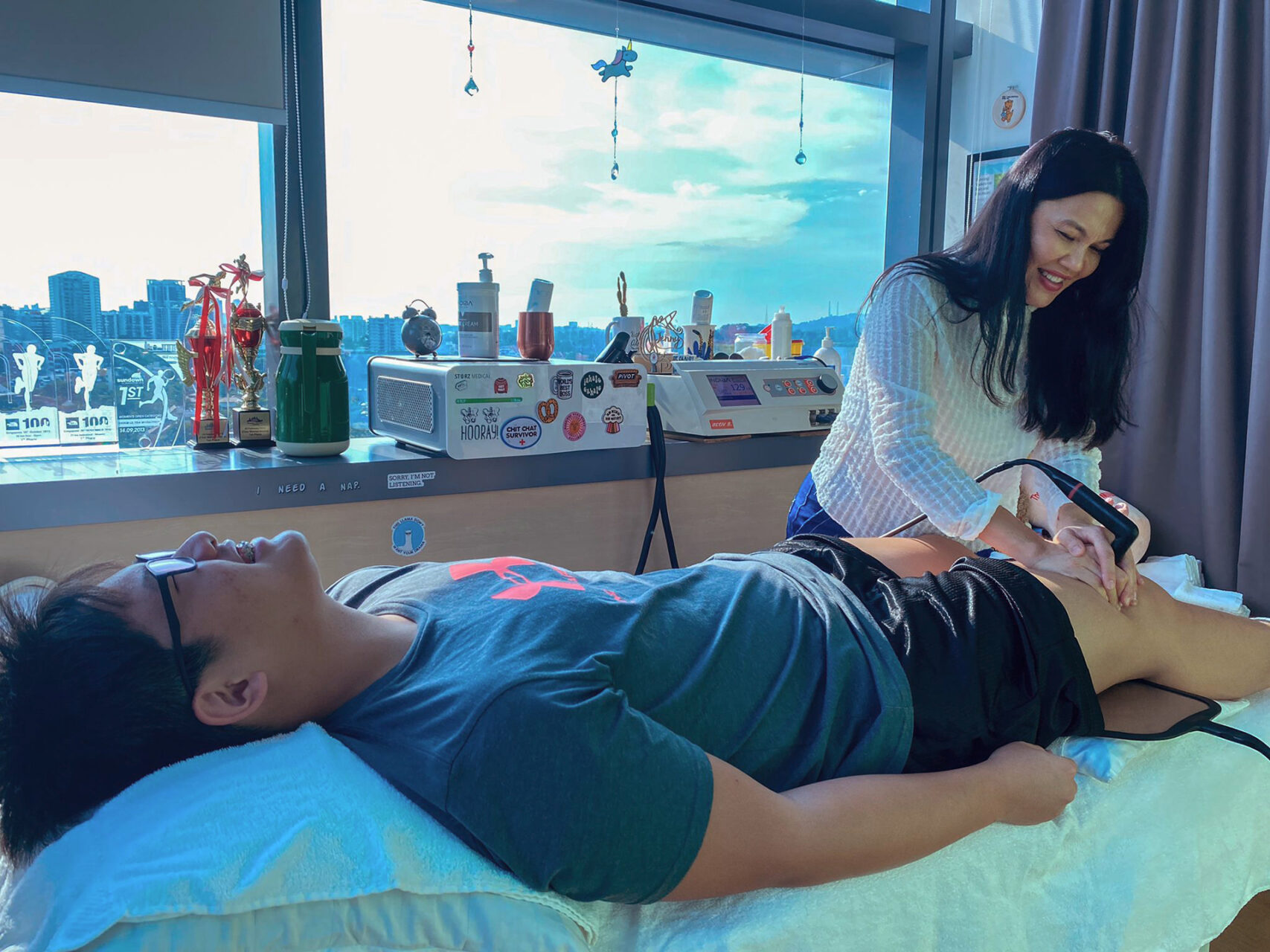
Conservative Management Following a Re-Tear of an ACL Reconstruction
A re-tear after ACL reconstruction is a tough blow. Conservative management following a re-tear of an ACL reconstruction may be appropriate for some patients, particularly those who do not participate in intense sports. However, knee instability can be a challenge after a re-tear. Instead of another surgery, at HelloPhysio, we focus on strengthening hamstrings, glutes, and core, paired with a functional brace. We also utilize advanced modalities to support recovery; INDIBA Activ helps by promoting tissue repair, smoothing out old surgical scars, while Shockwave Therapy tackles lingering pain.
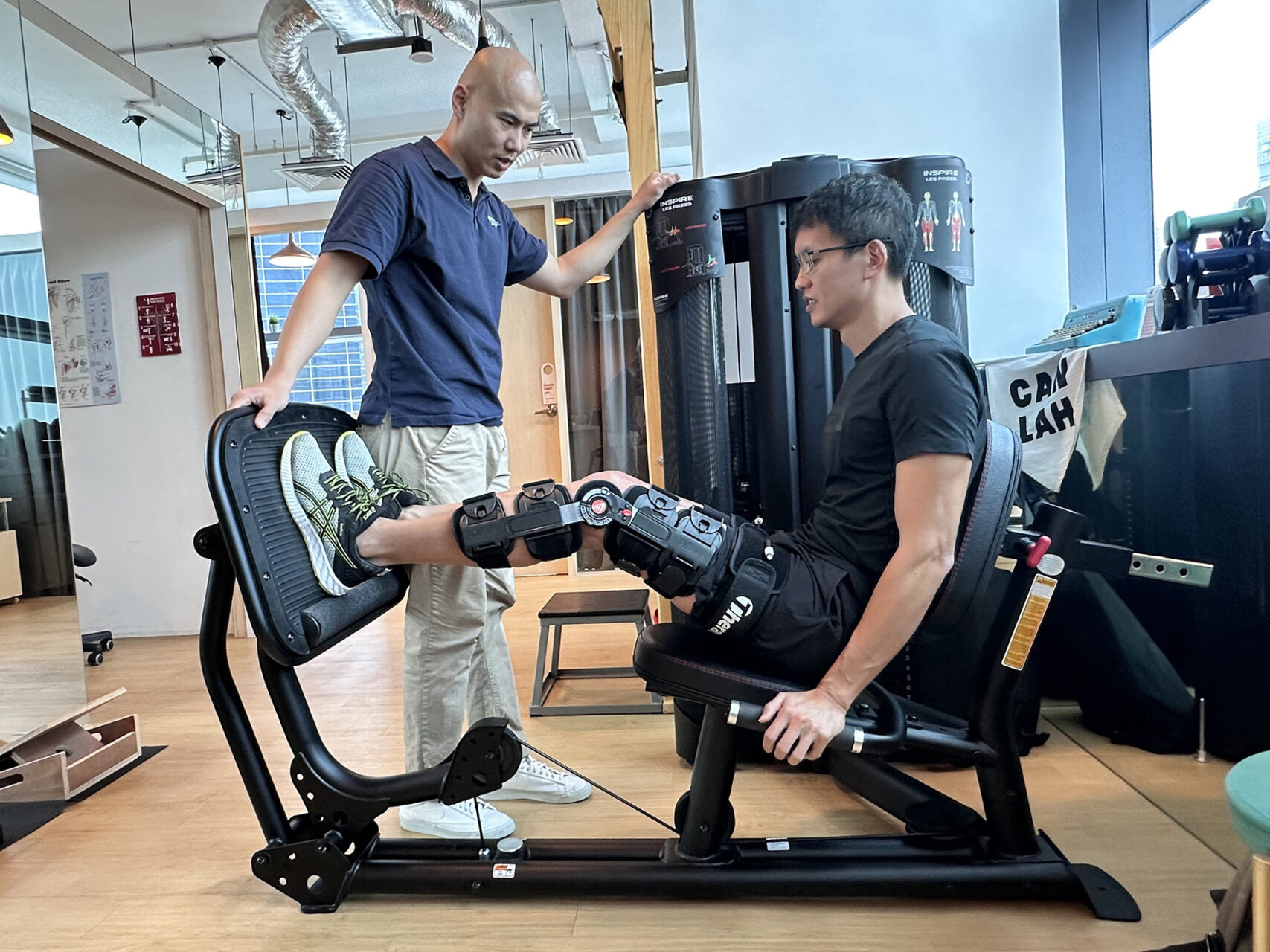
Stages of ACL Rehabilitation
Recovery after an ACL tear, whether surgical or conservative, follows a staged approach.
- Immediate Phase (0–2 weeks): Reduce swelling, regain range of motion, and gently activate the quadriceps.
- Early Strengthening (2–8 weeks): Gradual weight-bearing, controlled exercises for quads and hamstrings, and gait retraining.
- Progressive Loading (2–6 months): Functional strengthening, balance, and proprioceptive work. Clinical Pilates is often used here to retrain whole-body movement patterns.
- Advanced Rehab (6–12 months): Sport-specific drills, agility training, and return-to-play testing. LightSpeed Lift antigravity systems may be used to reintroduce running while safely limiting impact.
Throughout each phase, physiotherapy ensures safe progression, addressing not just the knee but also surrounding joints and muscles to restore complete functional movement.
Rushing back to sports is associated with an increased risk of graft re-tear (15% in the first year) or injury to the other knee. Solid physiotherapy, utilising tools like INDIBA to accelerate healing, helps mitigate these risks and ultimately builds a knee that can last.
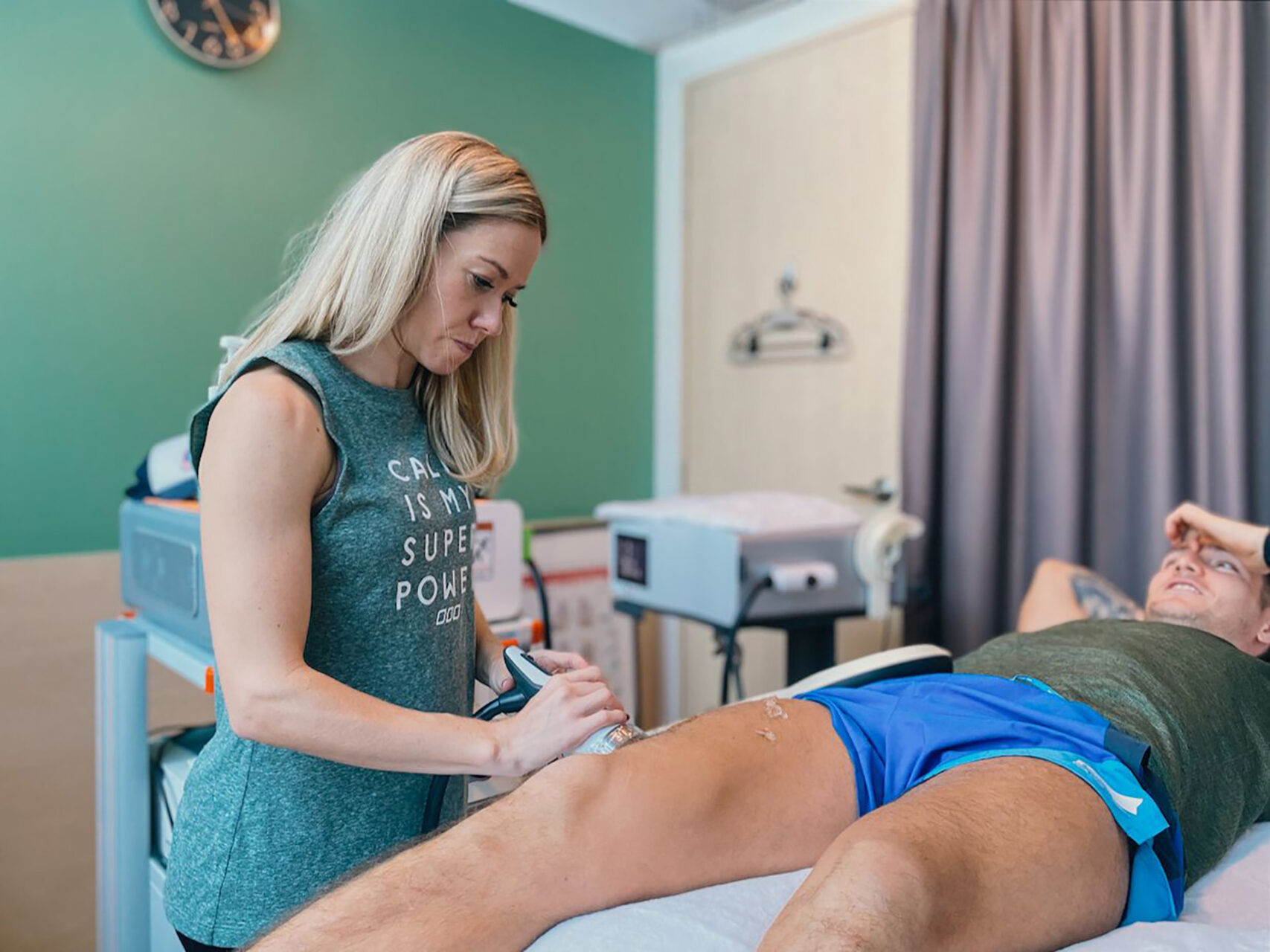
Prevention of ACL Tears and Re-Injury
To reduce your chances of injury, it’s essential to understand your individual risk factors, including weak hips, poor landing mechanics, or a history of previous injuries. Neuromuscular training, such as controlled jumps or agility work, teaches your body to move more efficiently.
We screen for issues like weak hips or bad landings at HelloPhysio, using exercises like single-leg squats to fix them. If you address these risk factors early, you can prevent injuries more effectively; however, results may vary.
Long-Term Prognosis After an ACL Tear
With effective ACL tear management, most individuals return to their previous activity levels, though outcomes vary depending on injury severity. Surgery, combined with rehabilitation, returns approximately 80% of athletes to sports, although some may experience knee pain or mild instability. Regular check-ins catch minor issues, helping to prevent further knee injuries and maintain your knee’s health for years to come.
An ACL tear is a rough ride, but you don’t have to go it alone. At HelloPhysio, our team combines manual physiotherapy with advanced technology, such as Shockwave Therapy and INDIBA Activ, to help you recover faster and stronger.
Dealing with an ACL tear or worried about another? Reach out or book online today. Your knee’s ready to rebound with HelloPhysio.

